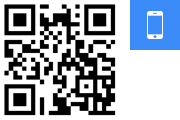一门生动实用的ESG课程是如何打磨而成的?| BI-复旦洞察

 智能总结
智能总结一门生动实用的ESG课程是如何打磨而成的?| BI-复旦洞察
当你被问起联合国的可持续发展目标(SDGs)时,你首先想到哪些目标?可能只有少部分人能够立刻做出准确的描述。学生们对可持续发展究竟了解多少?学生们希望从一门ESG和可持续发展的课程中获得什么?这门课如何教学才能真正帮到他们,让他们实际运用到自己的工作中?BI挪威商学院的教授Caroline Ditlev-Simonsen和顾问Anna Czerwinska,为我们揭秘课程背后的故事。
Caroline
Ditlev-Simonsen
Professor
BI Norwegian Business School
Anna Czerwinska
Adviser
BI Norwegian Business School
We asked students how they view topics such as sustainability and social responsibility—and their responses have changed the way we teach.
学生们改变了我们对于可持续发展等话题的教学方式。
Business schools are integrating more sustainability content into their curricula, but often, they are doing so based on assumptions about students’ knowledge and attitudes toward the topic.
商学院正在将更多的可持续性内容融入课程中。
When faculty at BI Norwegian Business School recently surveyed their students, they were surprised to discover that less than one quarter of the students could describe a single United Nations Sustainable Development Goal in specific terms.
BI挪威商学院的教师们对学生进行了一项调查,他们惊讶地发现,只有不到四分之一的学生能够具体说出联合国可持续发展目标中的其中一个。
In response to student feedback, BI has revised its curriculum in ways that will require students to engage more frequently with the SDGs and apply sustainable principles in multiple business contexts.
针对学生的反馈,BI已经对其课程进行了修订,要求学生们在商业环境中更多地呼应可持续发展目标(SDGs)。
Most business students today care about sustainability, believe in the importance of adopting responsible business practices, and want tosee more sustainability contentin their courses. But as business schools integrate sustainability into their courses and programs, what assumptions are faculty making about what students know and believe about sustainability and social responsibility in practice?
如今,大多数商学院的学生们都非常重视负责任的商业行为,并希望在他们接受的课程中看到更多关于可持续发展的内容。但是,当商学院将可持续发展融入课程时,学生们在这一话题上的认知,教授们了解多少?
At BI Norwegian Business School in Oslo, we wanted to discover our own assumptions. Earlier this year, we surveyed 112 students enrolled in Ethics and Sustainability in Organizations, a mandatory six-week MSc course held in the second half of the spring semester. Their responses offered us a clearer understanding of their perspectives, which we are using to tailor our teaching to how students actually view this important topic.
在BI挪威商学院,我们对112名参加“组织伦理与可持续发展”课程的学生进行了调查。这是一项为期六周的硕士必修课。他们的回应为我们提供了更清晰的视角。我们正在利用这些视角来调整我们的教学,使之更贴合学生的实际需要。
How Do Students Define Sustainability?
学生们如何定义“可持续发展”?
In our survey, we asked students questions such as the following to gain a more complete picture of their attitudes:
在调查中,我们向学生们提出了以下问题:
How would you define the term “sustainable development” in three words?Here, about one-third of students offered future-oriented responses that aligned with the1987 reportfrom the United Nations’ Brundtland Commission. The report defines sustainable development as “development that meets the needs of the present without compromising the ability of future generations to meet their own needs.” The remaining two-thirds of students placed less emphasis on social conditions and more on the environment; renewable energy; and environmental, social, and governance (ESG) policies.
你会用哪三个词来定义“可持续发展”?大约三分之一的学生给出了以“未来”为导向的回答,这与1987年联合国布伦特兰委员会的《我们共同的未来》报告相一致,将“可持续发展”定义为“既能满足我们现今的需求,同时又不损及后代子孙满足他们的需求”。剩下三分之二的学生则更多地关注环境、可再生能源,以及环境、社会和治理(ESG)政策。
When you think about the U.N.’s Sustainable Development Goals (SDGs), which goals do you think of first?At BI, we display a large poster featuring the U.N.’s 17 SDGs in public and private spaces throughout our building. Even so, we found that only about half of the students surveyed could refer to terms related to the goals, and less than one quarter could name one specific goal or describe it in exact terms. The majority of those who could name specific SDGs referred to SDG 4 (quality education) and SDG 5 (gender equality).
当你想到联合国的可持续发展目标(SDGs)时,你首先想到哪些目标?在BI,我们在大楼的公共和私人空间展示了一幅展示联合国17个可持续发展目标的大型海报。即便如此,我们发现只有大约一半的受访学生能够提到与目标相关的术语,不到四分之一的学生能够准确命名并描述其中一个具体目标,其中的大多数人提到了SDG 4(优质教育)和SDG 5(性别平等)。
What do you think is the world’s biggest sustainability challenge?Students’ top answer to this question was climate change, followed by war and waste. In addition, we asked students to rank six sustainability challenges in order of greatest priority. Once again, they ranked climate change first, followed by pollution, food insecurity, resource depletion, loss of biodiversity, and social inequality.
你认为可持续发展的最大挑战是什么?学生们的首要回答是气候变化,其次是战争和资源浪费。此外,我们还要求学生将六个可持续发展的挑战按优先级排序。他们将气候变化排在第一位,其次是污染、粮食不安全、资源枯竭、生物多样性丧失和社会不平等。
Are you pessimistic or optimistic about the future of sustainable development?Students were evenly split on this question—a finding that is especially important to us as teachers. If half of our students are lacking hope for the future, how can we deliver content in ways that inspire students to imagine positive solutions? We did not ask students why they were optimistic or pessimistic, but we plan to add that question to the survey we conduct next semester.
你对未来可持续发展抱有悲观还是乐观的态度?学生们在这个问题上的答案几乎相当——这个发现对我们教师来说尤为重要。如果我们有一半的学生对未来缺乏希望,我们在教学中应该如何激发学生去想象积极的解决方案?我们没有询问学生们为何感到乐观或悲观,但我们计划在之后进行的调查中加入这个问题。
How well do you think BI integrates sustainability into its curriculum?In 2022 and 2023, BI worked to better integrate the topic into our courses, and we wanted to learn whether students thought we had succeeded. We found that 80 percent of first-year students either strongly agreed, agreed, or somewhat agreed that sustainability was a part of BI’s courses. Now, however, we must continuously update our curriculum to reflect the rapidly changing world.
你认为BI的课程与可持续发展这一主题整合得好吗?在2022年和2023年,BI努力将这一主题融入我们的课程中。我们发现80%的一年级学生认同可持续发展是BI课程的一部分。然而,现在我们必须不断更新我们的课程,以应对这个迅速变化的世界。
If half of our students are lacking hope for the future, how can we deliver content in ways that inspire students to imagine positive solutions?
如果有一半的学生对未来缺乏希望,我们该如何通过教学激励他们?
How can we do a better job at integrating sustainability at BI?We received a range of answers to this question. Students recommended that we put “more focus on coming up with actual sustainable solutions for real companies,” offer a “view of both sides, both negative and positive,” and provide “more concrete examples.”
我们如何更好地在课程中融入可持续发展呢?我们收到了学生的各式建议,包括“更多地为真实企业提供实际的可持续发展解决方案”,提供“正反两面的观点”,并给出“更多的具体案例”。
Their most common request was that we integrate more examples of successful sustainability practices into the curriculum. With their feedback in mind, this upcoming semester we are including more relevant examples in our courses. On top of that, we will use more mini case studies,particularly from IMD, which students will then discuss in groups.
他们最普遍的要求是,在课程中融入更多成功的可持续发展实践案例。于是,我们将在接下来的学期中加入更多相关案例。除此之外,我们会使用更多的迷你案例研究,供学生们分组讨论。
For example, two semesters back, a debate was underway in Norway about whether to open the continental shelf to deep sea mining. On the final exam, we asked students to pick a country and write an argument about whether its government should ban or allow deep sea mining, discussing the tradeoffs involved. After the course, many students told us how much they liked the final exam question. They noted that it helped them understand the public debate in a completely new light.
例如,两个学期前,学生们在挪威就是否开放大陆架进行深海采矿的问题,进行了一场辩论。在期末考试中,我们要求学生选择一个国家的视角,写一篇关于其政府应该禁止还是允许深海采矿的论述文章。课程结束后,许多学生表示,他们非常喜欢这个期末考试题目,这帮助他们从全新的角度理解了公共辩论。
It was students’ positive feedback on this teaching experiment that shaped the way we designed exam questions going forward. Their feedback also prompted us to encourage and require students to read and reference more primary sources. Before, for instance, we would ask students simply to read about theParis Agreement. Now, we ask them to read the Paris Agreement, think about its benefits and shortcomings, and develop and argue for solutions they believe in. Knowing the value of this approach has been especially useful for faculty who teach courses that focus on sustainability.
正是学生们对这一教学实验的积极反馈,帮助我们在未来更好的去设计考题。根据他们的反馈,我们还鼓励并要求学生阅读和引用更多的原始资料。比如,以前我们可能只要求学生阅读关于《巴黎协定》的资料。现在,我们还要求学生去思考其中的优点和不足,并对他们认为正确的解决方案提出论证。这些对于教授在可持续发展课程的教学上尤其有用。
Reflecting on the Results
结果反思
Every semester, the faculty involved in teaching the sustainability component of the Ethics and Sustainability in Organizations course meet to discuss what worked, what did not work, and what we should consider adjusting for the next semester. These discussions cover not only how we might improve course content, but also how we can continuously improve course delivery by experimenting with different teaching and assessment approaches.
每个学期,参与教授“组织伦理与可持续发展”课程中可持续发展部分的教师们会聚在一起,讨论好与不好的做法,以及之后应该如何调整。这些讨论不仅涉及我们如何改进课程内容,还涉及我们如何通过尝试不同的教学和评估方法,持续改进课程的教学方式。
Our survey, along with other student feedback, has been instrumental in helping us question our assumptions and has inspired us to make some substantive changes for the upcoming fall semester. For example, we took note of the fact that students ranked climate change as the biggest sustainability challenge both globally and locally. Is this why students feel pessimistic about the future of sustainable development? Do they view the challenge as too big for a solution? This reflection led to new questions about how we can overcome students’ pessimism and help them see sustainability in context beyond climate-focused issues.
这些问卷调查和学生的反馈,对我们起到了关键作用,并激励我们为新学期的教学做出一些实质性改变。例如,我们注意到,学生们将气候变化视为最大的可持续发展的挑战。这就是学生们对可持续发展的未来感到悲观的原因吗?他们是否认为挑战太大,无法找到解决方案?这种反思引发了新的问题,即我们如何克服学生的悲观情绪,帮助他们从气候问题之外,在更宽泛的背景中看待可持续发展问题。
For example, even though BI’s faculty align sustainability content with the SDGs, few faculty connect the topics explicitly to the SDGs in course descriptions or in the classroom. In an internal mapping of our curriculum, we found that more than 50 percent of our courses integrate SDG topics, but only 6 percent explicitly mention the SDGs. How can we ensure that students apply sustainability concepts to all that they learn, even if not explicitly instructed to do so?
例如,很少有教师在课程描述或课堂上明确地将主题与SDGs联系起来。但实则上,有超过50%的课程融合了SDG主题,其中6%的内容是明确提到了SDGs。我们如何确保学生将可持续发展的概念应用于他们所学的一切,即使没有明确表示两者之间的关联?
In other words, how do we teach them to recognize sustainability content in their other classes even if we do not tag that content directly to terms such as sustainability, green business, and ESG issues in the syllabus? If faculty teaching a strategy course use a case study on an African agritech startup without calling it an ESG case, will students still connect it to the relevant SDGs?
换句话说,我们如何教会他们在没有直接用可持续性、绿色商业和ESG问题等术语标记的情况下,也能在其他课程中识别出可持续发展的内容?如果战略课程的教师在课上用了一个关于非洲农业科技创业公司的案例研究,而没有称之为ESG案例,学生们是否仍然能够将其与相关SDGs联系起来?
We must train students to think in terms of sustainability, responsibility, and societal impact even when these terms are not directly mentioned in course content.
我们必须培养学生从可持续性、责任和对社会影响的角度思考问题,即使这些词汇并未直接出现在课程内容中。
Our survey question on the SDGs offered us some initial insights. Yes, BI students are familiar with the SDGs, but if less than a quarter of the students can describe the specific focus of a single SDG number (for example, that SDG 13 relates to climate change), it signals to us that these goals are not in their working memory. It tells us that students have not deeply engaged with the framework. Have we been incorrectly assuming that students are taking the opportunities available to apply the SDGs in business contexts? We will find out in the upcoming semester, when we will spend more time in class having students actively engage with the SDGs.
我们的可持续发展目标(SDGs)调查问题为我们提供了一些初步的洞察。BI的学生即使对SDGs有所了解,但这些目标并未成为他们工作记忆的一部分,证明学生们还没有深入参与到这个框架中去。我们是否错误地假设学生们正在抓住机会将SDGs应用于商业环境中?我们将在接下来的学期中找出答案,届时我们将在课堂上花更多时间,让学生积极地与参与SDGs互动讨论。
We spent the early part of this summer evaluating different SDG tools and projects, determining which would best allow students to work hands-on with and actively apply the SDGs in a business case. Our hypothesis is that this deeper engagement will help students not only see how the SDGs apply to real-world business contexts, but also recognize sustainability content in their subsequent courses—and, eventually, in the workplace.
我们评估了不同的SDG工具和项目,以确定哪些最适合让学生在商业案例中应用。我们的假设是,这种更深入的参与不仅能帮助学生看到SDGs如何应用于现实世界的商业环境,还能在课程中认识到可持续发展的内容——最终,在工作场所中也是如此。
Creating a Ripple Effect
制造连锁反应
We realize that current trends of unsustainable development led businesses to focus on economic growth over societal welfare and to measure their success in terms of their gross national product rather than sustainable progress. If we want to reverse that trend, we must diverge from “business education as usual” and prepare students for a future that is yet unknown to us.
我们意识到,当前一些非可持续发展的现象,导致企业将经济增长置于社会福利之上,并以国内生产总值而非可持续发展来衡量成功。如果我们想要逆转这种趋势,我们必须摆脱“常规的商业教育”,让学生为尚不知晓的未来做好准备。
For this to happen, we must do more than include words such as “environment” and “sustainability” in our course descriptions. We must train students to think in terms of sustainability, responsibility, and societal impact even when these terms are not directly mentioned in course content.
为此,我们不仅要在课程描述中包含“环境”和“可持续性”等词汇。我们必须培养学生即使在课程内容中没有直接提及这些术语时,也要从可持续、责任和社会影响的角度进行思考。
We realize that what students say they want is not necessarily what will help them learn the most—or what they most need to learn. That said, our survey’s results provide a valuable window into students’ understanding of and attitudes about sustainable development.
我们意识到,学生想要学习的可能并不一定是他们最需要学习的东西。我们的调查结果为了解学生对可持续发展的理解和态度提供了打开了窗口。
Over the next semester, we are interested to see if the minor changes we have made in Ethics and Sustainability will have a ripple effect throughout students’ studies. In the future, we plan to conduct a slightly revised survey, so that we can gain insights into each incoming class. We also plan to design a short exit survey to see whether we are achieving our intended objectives.
接下来,一起来看看我们在组织伦理和可持续发展课程所做的微小改变,是否会在整个学习过程中产生连锁反应。将来,我们将改进这份调查并设计新的调查,以便我们能够洞察每届新生的情况,查看我们是否实现了预期的目标。
As sustainability becomes even more important to business, we offer the following suggestions to other business schools and faculty: Question your assumptions, experiment with your teaching, measure the effects of each approach, and adjust as necessary. Finally, maintain strong connections with practitioners so that you not only know what is happening in the real world today, but also can anticipate what competencies students will need in the future.
随着可持续发展对商业的重要性日益增加,我们向其他商学院和教师提出以下建议——质疑你们的假设,尝试不同的教学方式,衡量每种方法的效果,并根据需要进行调整。最后,保持与实践者的紧密联系,这样你们不仅能够了解当今现实世界正在发生的事情,还可以预测学生未来需要具备的能力。
As educators, we must all be critical and teach our students to be critical. We need to ask students tough questions, have them struggle to understand the big picture, and let them reach their own conclusions. Through this process, they will develop systems thinking, a skill they will need as they tackle the world’s biggest problems.
作为教育工作者,我们都必须具有批判性思维,并培养我们学生的批判性思维。我们需要向学生提出难题,让他们理解全局,自己得出结论。通过这一过程,他们将发展系统思维,这是他们解决世界难题时所需要掌握的技能。
Most importantly, we need to foster students’ ability to cultivate informed opinions, understand opposing perspectives, and remain optimistic about future possibilities. Students need to discuss sustainability challenges in different fora—not just in dedicated sustainability courses or modules. They must be ready to confront sustainability issues in every relevant business context.
最重要的是,我们还需要培养学生形成明达的思维,善于理解对立观点,并对未来的可能性保持乐观。学生需要在不同的场合讨论可持续发展的挑战,而不仅是在专门的可持续发展课程中。他们必须准备好在每一个相关的商业背景中面对可持续发展的问题。
Authors |
Caroline Ditlev-Simonsen(Professor, BI Norwegian Business School)
Anna Czerwinska(Adviser, BI Norwegian Business School)
Link |
https://www.aacsb.edu/insights/articles/2024/08/what-do-students-really-know-about-sustainability
About BI BUSINESS REVIEW
The latest research news and insights from faculty of BI, converting new research and findings to tomorrows business opportunities.
(本文转载自复旦BI国际MBA ,如有侵权请电话联系13810995524)
* 文章为作者独立观点,不代表MBAChina立场。采编部邮箱:news@mbachina.com,欢迎交流与合作。
备考交流
最新动态
推荐项目
活动日历
- 01月
- 02月
- 03月
- 04月
- 05月
- 06月
- 07月
- 08月
- 09月
- 10月
- 11月
- 12月
- 05/06 活动报名 | 经济学教授x帆船奥运冠军x独角兽企业联创,聊聊个体与组织的双向奔赴
- 05/07 活动预告 | 节后活动不停歇,5月7日招生直通车开启预约,CLGO毕业校友、知名跨国消费电子企业学长经验分享即将到来!
- 05/08 颠覆性创新时代,一切『再设计』| 复旦-BI MBA《设计思维》公开课报名
- 05/10 全球经济格局变化与中国的应对策略 | 复旦MPAcc公开课报名
- 05/10 重磅抢位!中欧MBA年度健康产业论坛2025:医疗创新为本,领航易变时代
- 05/10 报名|就读一年开启创业之路!交大TFMBA学长与你相约招生开放日
- 05/10 长江商学院MBA公开课|大厂专题:多元竞争,突破增长瓶颈 @北京
- 05/10 【招生沙龙报名】把握AI时代机遇,复旦MBA助你职场进化
- 05/11 活动报名 | 5月11日深圳招生直通车启程,招生政策新动向、在校生活Q&A一站式解答!
- 05/16 长江商学院MBA公开课 | 从优势到胜势:企业多元化发展的核心引擎打造方法论
热门资讯
MBA院校号
暂无数据

















